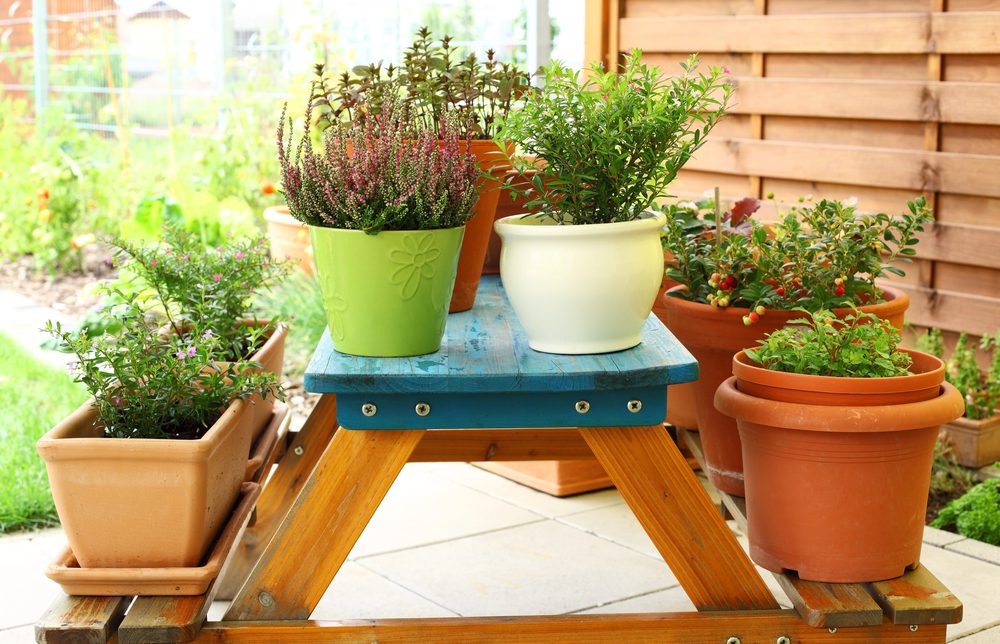Follow Us @
Vegetable garden at home come running to learn

With planting and how to grow vegetables, your own vegetable garden at home. Come running to learn this delicious activity, see below
GARDEN AT HOME
Cities show on terraces and balconies, less flowers and more vegetables: vegetable gardens in pots proliferate with ecological awareness and interest in food, and that is very good!
VASES AND FLOWERS
Pots should be as large as possible, although some vegetables such as lettuce or onions can grow well in small pots, as long as they don’t lack water.
In general, you should look for containers with a depth of between 20 and 40 cm so that the roots can develop well.
In this way, the best results are obtained with large pots, as they maintain more constant humidity and the roots overheat less.
The white vases, ideal for the summer, as they keep the roots cooler.
The black ones, which absorb the sun’s heat, are more suitable for the cold months.
With a little imagination, you can recycle many containers to use them as flower pots: water jugs, old bathtubs, plasticized cloth bags from the supermarket… Just make some holes in the bottom to facilitate drainage.
These substrate mixes are especially suitable for planting in containers. Rich in nutrients and have a great capacity to retain water, in this way it reduces the need for watering and ensures that the vegetables have all the food they need.
CONTAINERS AND TABLES
Grow tables allow you to grow a wide variety of vegetables in a small space. Even the elderly or people with mobility issues can work on them.
These tables, filled with a very nutritious mixture of substrates, normally composed of coconut fiber and compost vermi (the humus that earthworms produce when they digest organic matter and one of the most complete ecological fertilizers).
THE THREE SUCCESSFUL INGREDIENTS
THE SUN
It is the basic element, without it there is no growth. In general, the south orientation is best because the more daily hours of sun the terrace has, the better the plants will grow. Fruits, mainly tomatoes and peppers, produce very little if they don’t have abundant insolation.
But if the balcony faces north, don’t be discouraged either. Although they grow more slowly, it is also possible to grow vegetables. The vegetables that best survive on terraces with few hours of sunlight are generally leafy and root vegetables: spinach, celery, cabbage, cauliflower, Brussels sprouts, lettuce, turnips, leeks, radishes, chard, endive, broad beans, peas, strawberries and many aromatics such as parsley, coriander, mint, basil and oregano.
IRRIGATION
It is the main care that a garden needs, especially when the plants grow in pots, where the amount of moisture available is much lower than in the soil.
In spring and autumn, unless it rains, you need to water the plants every two or three days, while in summer watering should be daily.
A good idea is to install a drip irrigation system and connect it to the faucet through a programmer that turns on the water for some time every day.
Plants regularly receive what they need, water saved and freedom gained.
ABUDOS
There is very little soil in a pot and, unless we have prepared an extremely nutrient-rich substrate, it will probably be necessary to add some fertilizer during the growth cycle.
Solid organic fertilizers, such as manure, guano, compost or worm humus, are usually mixed with the substrate when filling the pots. If you need to add more during growth, just spread it on the soil and the irrigation water takes care of taking the nutrients to the roots.
Liquid fertilizers are supplied dissolved in the irrigation water and their effect is much faster, although of a shorter duration.
Healthy, well-fed plants have intense green leaves, but when nutrients are scarce, the green color becomes lighter and, if the deficiency is prolonged, it can even turn yellow.
Did you like the tips? Great!
Vegetable garden at home come running to learn
So, take the opportunity to add more flavor to your days. Visit our social networks! Follow AFRILATEST on Google News and receive alerts for the main recipes, soap operas, series, meals and more!!!
SHARE POST AND EARN REWARDS:
Join our Audience reward campaign and make money reading articles, shares, likes and comment >> Join reward Program
FIRST TIME REACTIONS:
Be the first to leave us a comment, down the comment section. click allow to follow this topic and get firsthand daily updates.
JOIN US ON OUR SOCIAL MEDIA: << FACEBOOK >> | << WHATSAPP >> | << TELEGRAM >> | << TWITTER >
Vegetable garden at home come running to learn
#Vegetable #garden #home #running #learn
-
News2 months ago
Harry decides to appeal after loss of police protection in the UK
-
Good News TV series2 months ago
Preta Gil is the new presenter of TVZ on Multishow
-
Good News TV series2 months ago
Justin Bieber and Hailey go to church using a powerful car
-
Good News TV series2 months ago
Fuzuê: Pascoal is sentenced to more than 70 years in prison
-
Health and Fitness2 months ago
Hyperbaric Oxygenation accelerates recovery from knee injuries, according to USP study
-
News2 months ago
Viradouro wins the Rio de Janeiro Carnival title in 2024 now news
-
Culture2 months ago
the Sub4 Turismo package that we recommend and we go (on the 42 km)
-
Good News TV series2 months ago
Cris discovers Isis's pregnancy. And now?






























